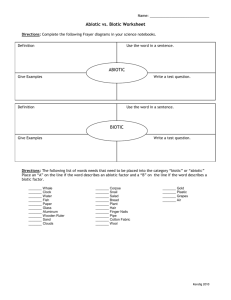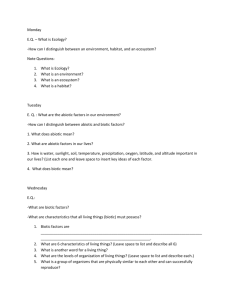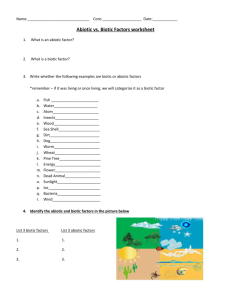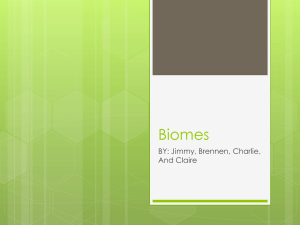Zoology on Temperate Deciduous Forest - tbrown10
advertisement
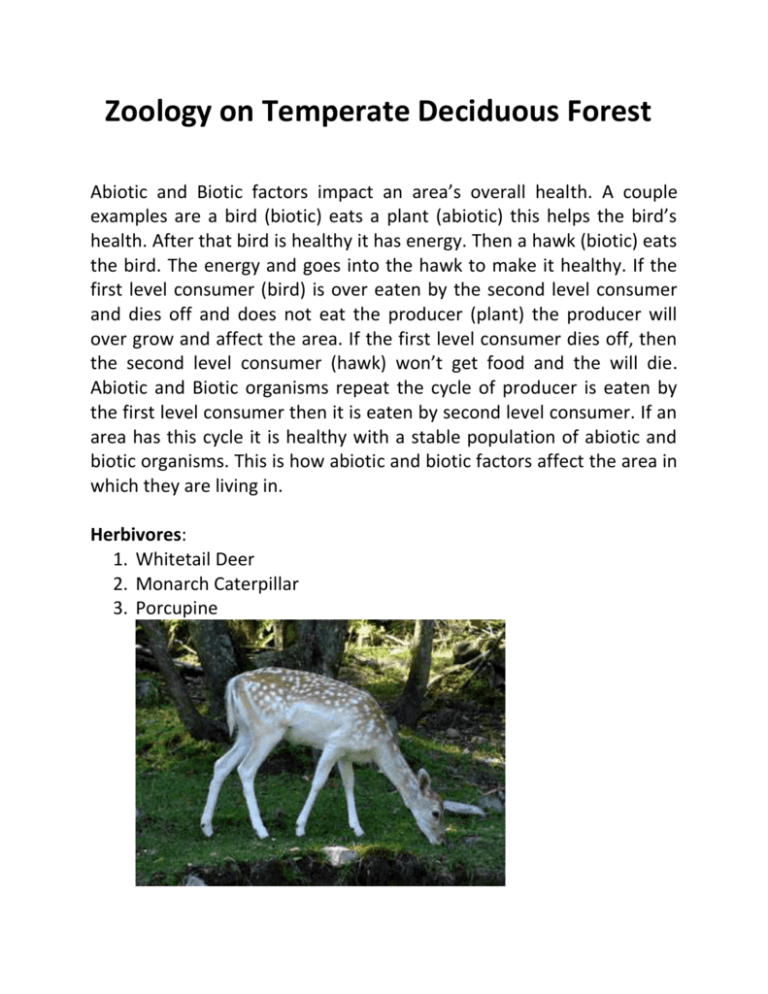
Zoology on Temperate Deciduous Forest Abiotic and Biotic factors impact an area’s overall health. A couple examples are a bird (biotic) eats a plant (abiotic) this helps the bird’s health. After that bird is healthy it has energy. Then a hawk (biotic) eats the bird. The energy and goes into the hawk to make it healthy. If the first level consumer (bird) is over eaten by the second level consumer and dies off and does not eat the producer (plant) the producer will over grow and affect the area. If the first level consumer dies off, then the second level consumer (hawk) won’t get food and the will die. Abiotic and Biotic organisms repeat the cycle of producer is eaten by the first level consumer then it is eaten by second level consumer. If an area has this cycle it is healthy with a stable population of abiotic and biotic organisms. This is how abiotic and biotic factors affect the area in which they are living in. Herbivores: 1. Whitetail Deer 2. Monarch Caterpillar 3. Porcupine Carnivores: 1. Brown Bear 2. Wolverine 3. Hawk Omnivore: 1. Blue Jay 2. Sparrow 3. Crow Decomposer: A decomposer is an organism that breaks down other organisms after they die. One of the most common decomposers in a temperate deciduous forest is a maggot. Decomposers are very important to this biome because the dead organism is not just laying there forever and this is a win-win situation. The biome is not full of dead organisms and a decomposer gets its meal. Fungi are another common decomposer. QuickTime™ and a TIFF (Uncompressed) decompressor are needed to see this picture. QuickTime™ and a TIFF (Uncompressed) decompressor are needed to see this picture. Food Chain: Two examples of food chains are: Crow, second level consumer Caterpillar, primary consumer Bush, producer Hawk, second level consumer Mouse, Primary consumer Leaf, Producer QuickTime™ and a TIFF (Uncompressed) decompressor are needed to see this picture. QuickTime™ and a TIFF (Uncompressed) decompressor are needed to see this picture. Adaptations: The grizzly bear adapts to this biome because it has the perfect body to survive in the conditions. It adapted to its food, its weather and its home. It uses its fur to warm its self in the winter. It uses its scent to find its food, and it lives in caves to be warmed in the winter. All animals adapt to there environments, and a in different ways. Acknowledgments: Thank you to Mrs. Brown, the best teacher ever.



